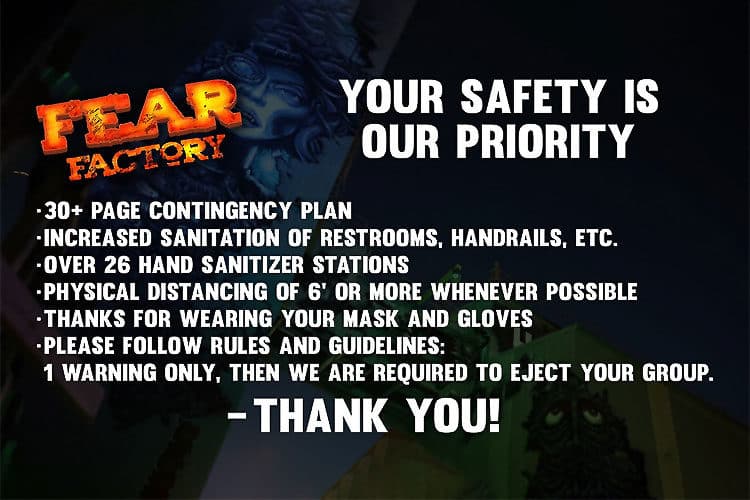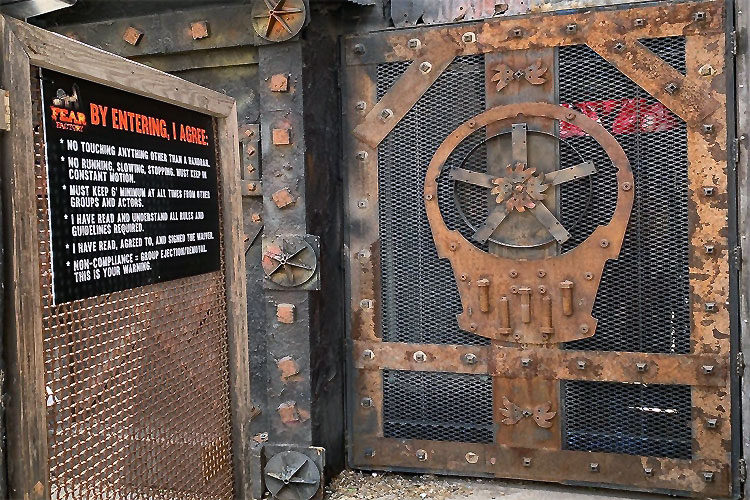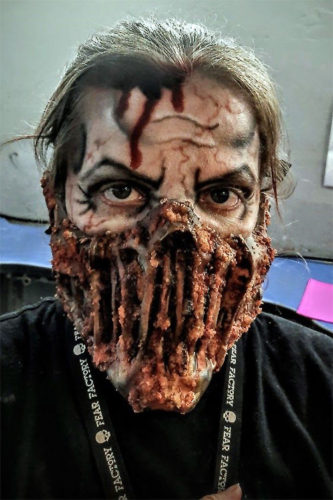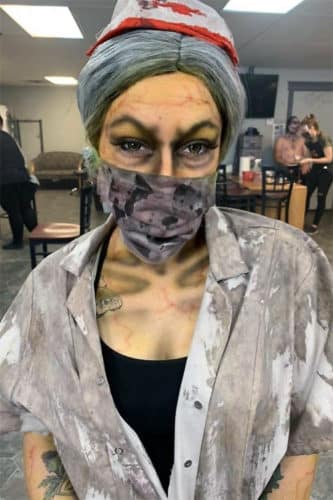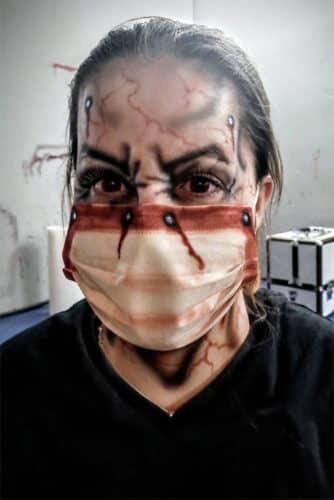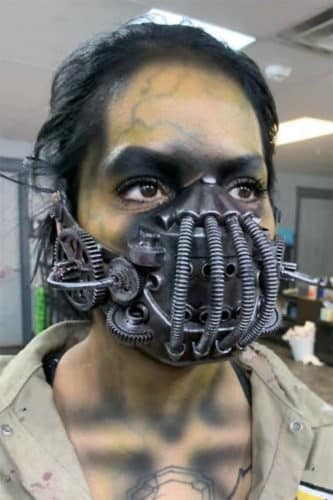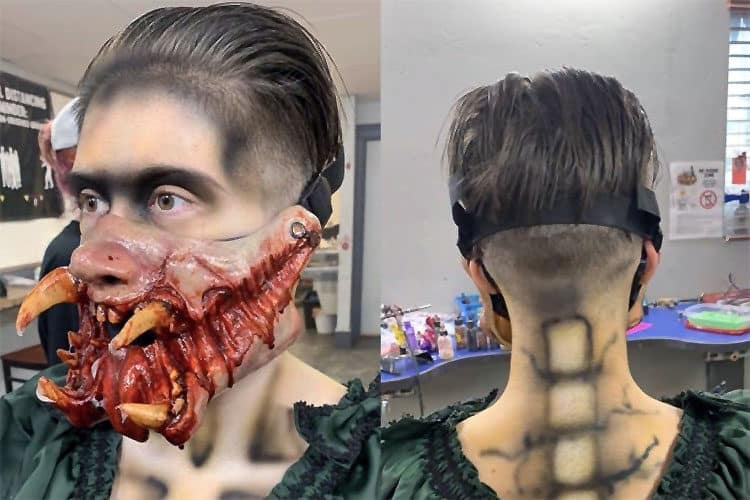Following its successful reopening, Fear Factory provides guidance for haunts reopening during COVID-19
On May 29th, Fear Factory’s annual Halfway to Halloween event became the first haunt to reopen since we entered the COVID-19 pandemic. To make this event happen, Fear Factory built and implemented a contingency plan, which it’s making available free to attractions.
It’s now September, and most Halloween events have made the decision about opening this year. Spencer Terry of Fear Factory has been making presentations about what he and his team have learned since that May event, and this article summarizes his recommendations for all haunters who will be having an event this season.
Listen to Spencer’s first masterclass from may here. Listen to the recent masterclass from Haunter’s Toolbox here.
Watch Spencer’s talk from May here.
Listen Now
Key Takeaways
- Begin by working with your local and state public health officials.
- Use visible and specific signage and communicate expectations clearly to guests.
- Assure that staff feel safe by giving them control of their degree of participation.
- Redesign your mask and makeup protocols to assure actor safety.
- Rethink scares—using animatronics, for example.
- Make cleaning visible
- “Before you sell an event, you have to talk about safety. Otherwise, you’ll lose ticket sales.”
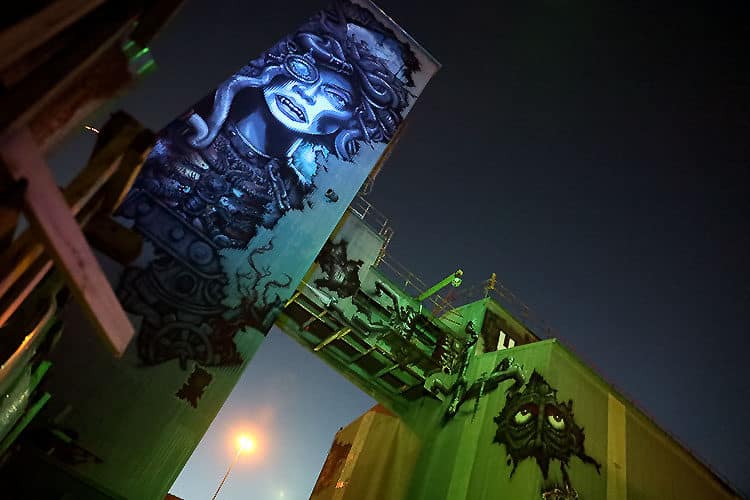
Work with Your Local and State Public Health Officials to Implement Appropriate COVID-19 Safety Measures
Even though COVID-19 is a global pandemic, the issues, challenges, and regulations each haunt faces are locally based, so be certain to take the proper steps using the information in this article to understand how it applies to your locale.
Spencer feels it’s vital to connect with your local health department rather than risking the consequences of not making that contact. “At the end of the day, the health department is going to show up. However, your biggest concern isn’t the health department. It’s consumer confidence, and that’s an uphill battle if you lose their confidence. If consumers don’t feel comfortable and safe, they’re not going to come.”
As Spencer’s team proceeded to plan for reopening, the language in the regulations often changed. “The language was always in motion, and there were learning moments every day as my team planned for the reopening.”
Spencer emphasized that it’s necessary to start working with public health officials early. “The health department’s job is to make you jump through hoops, so you need to be proactive.”
Also, safety requirements must be tailored for your haunt. For example, if people have breathing problems that prevent them from wearing a mask, Fear Factory makes clear in its signage that these people shouldn’t be entering the property anyway. “We have lots of stairs, we use fog, so if people have respiratory issues, they shouldn’t be visiting us.”

Have Visible and Specific Signage and Communicate Expectations Clearly to Guests
When it comes to letting your guests know what you’ve specifically done to address coronavirus concerns, Spencer recommends you create special signage that stands out from your other signage—like making it a different color or putting a red bar across the top. There’s a sign at Fear Factory that basically says, “if someone in your group messes up or doesn’t want to comply with the rules, they receive one warning. If they mess up again, the whole group will be thrown out. This has been one of our rules for several years, and it works. The group will keep that person in check,” said Spencer.
There was a sign posted before guests entered the Halfway to Halloween attraction that listed requirements and expectations. Guests had to read this sign, look up at a camera, and nod their head in agreement to provide recorded, visual consent. “We had to clearly communicate—perhaps almost abrasively—that we were serious about people adhering to the rules. It worked. We had no issues.”
Video security is used all around the Fear Factory property, and that’s also disclosed on its signage. “We use cameras everywhere, and there are a good number of staff that are specifically assigned to do nothing more than monitor flow. When guests enter, they see signage that states we’re using CCTV and video recording. This is also in the confirmation email and the waiver that guests sign.”
Staff use walkie talkies in every zone. “Fear Factory is broken up into 13 spaces, and every one of those spaces has two radios going at any given time connecting leadership, safety, the security team, or staff involved in monitoring flow. There’s always an area supervisor, a manager, or director involved,” explained Spencer.
All of these are excellent strategies for keeping guests and staff safe.
Assure That Staff Feel Safe by Giving Them Control of Their Participation
A big concern for all haunted attractions is assuring that staff feel safe, so having a detailed plan in place is crucial. “At first, there was concern among our actors and our front-of-house staff, because they’re right there with the customers. We told everyone, ‘If you don’t feel comfortable for whatever reason, you don’t need to be here. We’re going to supply you with PPE and make sure you’ve got everything, but each individual has to make that decision.’”
Redesign Your Mask and Makeup Protocols to Ensure Actor Safety
Fear Factory’s contingency plan requires actors to wear character masks over PPE masks. “All our actors wear two masks, and we’re working with some great companies to provide character masks that work phenomenally well with PPE masks.”
One area that provides a challenge is makeup. Fear Factory now only applies makeup using airbrushes, and it had to reduce the number of makeup artists in the makeup room from 17 to seven to maintain the six-foot distancing. However, they came up with some terrific makeup that incorporated PPE. Character masks were also created that integrated PPE, examples of which appear in Fear Factory’s contingency plan.
Another area of focus was costumes. “Costumes are tricky. Our goal is to have one actor in one costume for the entire season. Not everybody has a budget that allows for that, but, in our case, it’s vital. There’s a concern about coronavirus and other pathogens remaining for a certain period of time on fabric—costumes, seats—and we have to address that.”
Rethink Scares—Consider Animatronics
Given that actors can’t get closer than six feet to guests, Spencer’s team had to rethink scares. In the past, animatronics had been used as decoys, so actors could scare more effectively from another direction. However, a benefit of animatronics is they can be used to scare from within six feet, unlike live actors. “We figured out a way to create an effective scare within six feet without using a human,” said Spencer. “I’ve always relied on actors, because they can deliver the best scares, but animatronics can be triggered to create an air blast or something audio to create a startle scare.”
Another change has been eliminating areas of the haunt that are subject to guest contact—claustrophobia walls, barriers, curtains, or any areas where guests have to push through, walk through, or move out of the way. “All of that is gone,” said Spencer. “That was a difficult conversation, because those things serve as decoys to make the scare happen. So, taking that away is tricky. We had to think about the scare differently.”
Make Cleaning Visible
Spencer believes it’s important to have lots of staff visibly cleaning. “We surveyed people exiting our Halfway to Halloween event and asked if seeing employees cleaning and wearing PPE made them feel more concerned or made them feel safer. The responses indicated that people felt good about seeing employees walking around in Hazmat suits.”

People Are Ready for Haunt Season
That Halfway to Halloween was a sell-out, along with the positive responses from guests in Fear Factory’s exit survey for this event, demonstrate that people are ready to get out and get scared. However, data show that wearing masks and being conscious of social distancing take away from the fun of going to theme parks and attractions. “Our survey showed that people missed being touched by the actors—which had been an optional upgrade at Fear Factory. Also, we didn’t have concessions open, and we didn’t have our rides open, and people said they missed those things. Unfortunately, part of the new normal is that there are changes everywhere we go—the grocery store, our place of worship—but I think people are ready to lean into that.”
This Year of All Years, You Need to Do Everything Right
Fear Factory conducted an exit survey at Halfway to Halloween, and the response indicated that Spencer’s team had marketed this event in such a way that guests felt safe enough to buy a ticket during a pandemic and be in a space where there were a lot of people. “Basically, before you sell an event, you have to talk about safety. If you don’t, you’ll lose ticket sales. By the time we opened, we were already sold out. We put our plan on our website, which referred visitors to our ‘commitment to safety’ and an FAQ page, so they knew what we’d done to prepare and assure their safety.”
Spencer emphasized how important it is for haunts to make the proper preparations and do this season right. If a haunt gets shut down, it doesn’t just affect that haunt and that market but the entire industry. This is why Fear Factory is making its contingency plan available for free to anyone in the entertainment business. “At some point, the contingency plan became less about Fear Factory and more about our industry. We, at Fear Factory, took the first step. We paved the first mile of a 30-mile journey, and each haunted house will pave another mile when it reopens. We just have to keep on doing that.”
He also noted that the most successful companies during turmoil are the ones that apply the gas—after considering all the restrictions and caveats. “If you aren’t going to open your haunt this year, the reality is you’re losing part of your market as well as your internal customer base—your staff. So, any way you can stay in front of people will be good. We have to jump through the hoops to make sure we’re either meeting the demands on the right or the left of where people are. Our job as business operators is to find that space in the middle and to make sure that we do our best to capture revenue and to provide a good experience.”

Receive a Free Copy of Fear Factory’s Contingency Plan
To receive a copy of Fear Factory’s contingency plan, click here. On the Fear Factory website, under “FAQs” on the “Contact Us” page, visitors will be able to see a summarized version of the plan that was sent to all of Fear Factory’s customers. There’s a form to fill out to receive the 60-item PDF version. Fear Factory wants to make this available to everyone and also know who’s receiving it.

